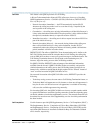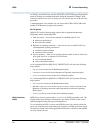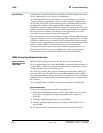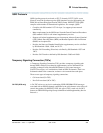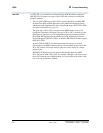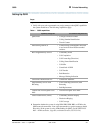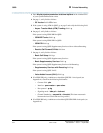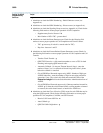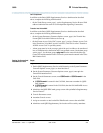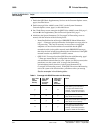
QSIG
369
Administration for Network Connectivity
555-233-504 — Issue 1 — April 2000 CID: 77730
B Private Networking
QSIG Protocols
QSIG signaling protocols are based on ITU-T (formerly CCITT) Q.931 access
protocols across the Q reference point. QSIG standards are also supported by the
ISDN Private Networking Specification (IPNS) Forum. DEFINITY ECS QSIG
complies with a number of international regulations. For example, QSIG:
• Complies with ISO standard 11572 for layer 3 to support private-network
connectivity.
• Meets requirements for the ISO Private Network Generic Functional Procedures
(ISO standard 11582) for call-related supplementary services.
• Supports call-related supplementary service transport, Abstract Syntax Notation 1
(ASN.1)/Basic Encoding Rules (BER), and Remote Operation Service Element
(ROSE) services/protocols.
• Provides the Name and Number Identification supplementary service as defined
by ISO Standards 13864, 13868, and 11572.
• Provides Call Forwarding (Diversion) as defined by ISO Standards 13872 and
13873.
• Provides Call Transfer as defined by ISO Standards 13865 and 13869.
Temporary Signaling Connection (TSCs)
A Temporary Signaling Connection (TSC) provides a temporary signaling path
through ISDN switches for exchanging supplementary service information (for
example, exchange Facility Information Elements in call control messages,
FACILITY messages, or a combination of both on ISDN D-channels. There is no
B-channel related to the connection; no data or voice transmissions take place.
There are two types of temporary signaling connections:
• Call Associated (CA-TSC)
• Non-Call Associated (NCA-TSC)
CA-TSC (DCS only) A CA-TSC refers to a service for exchanging USER INFORMATION messages
associated with an ISDN B-channel connection by the call reference value of the call
control data packets. On DEFINITY ECS, this type of TSC is used only for DCS
features on ISDN-PRI Signaling Groups administered with Supplementary Service
Protocol a.





